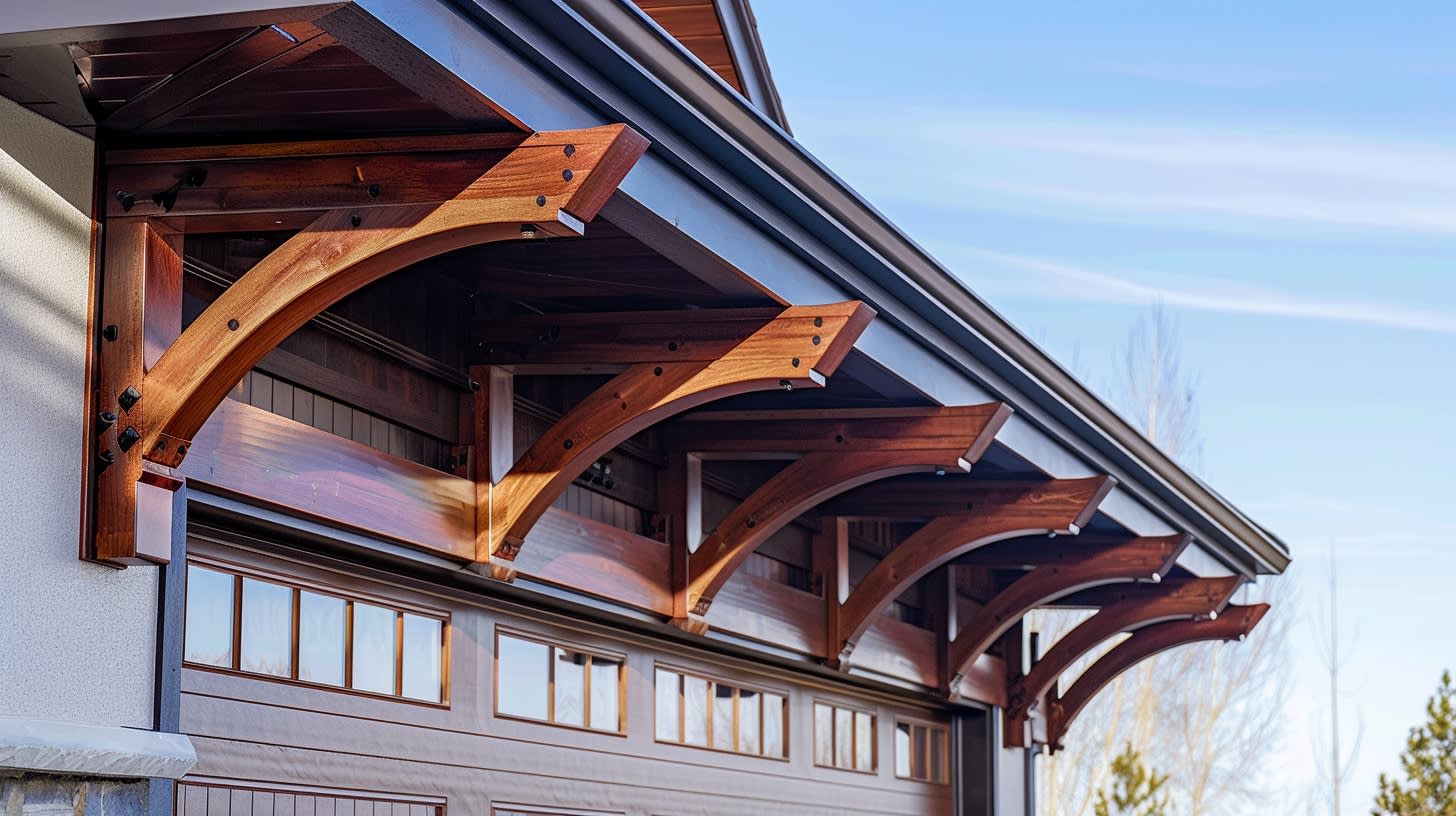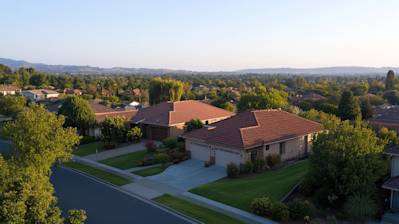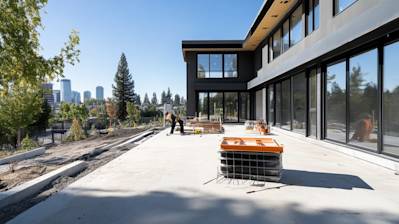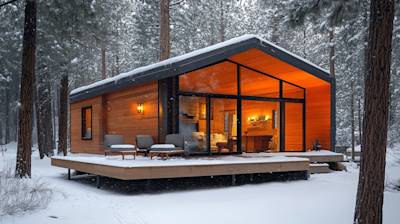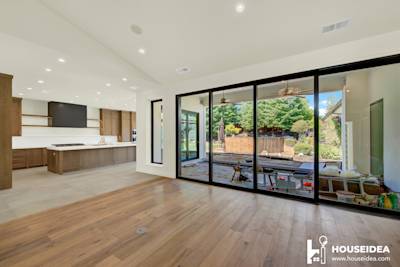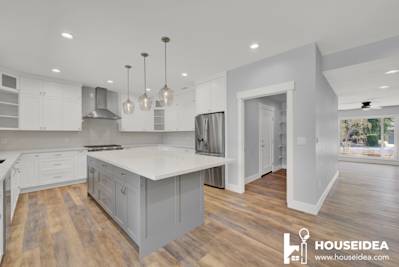Whether you're working on a new construction project or revamping an existing one, architectural elements play a significant role in the overall aesthetics. An often overlooked detail in construction that can establish a unique exterior appearance are Rafter Tails. Rafter Tails protrude from the facade of homes, extending beyond the wallline to showcase architectural styles and add aesthetic value. In this blog article, we are going to delve into the depths about everything you need to know about rafter tails.
Understanding the Basics of Rafter Tails
Rafter Tails are the uncovered part of a roof rafter that hangs over a building's exterior wall. These architectural details, frequently seen in Craftsman, cottage and historic reproductions are present not just for aesthetic reasons but also serve functional purposes like offering shade, directing rainwater away from the wall, and supporting the roof material.
The Functionality of Rafter Tails
-
Shade Production: Extending the roof's edge, rafter tails provide additional shade to a building's exterior, contributing to a cooler interior, particularly in warmer climates.
-
Water Management: By extending beyond the building's footprint, rafter tails help guide rainwater clear of the foundation, preventing potential water damage.
-
Structural Support: In some construction styles, rafter tails serve as integral parts of the roof frame structure, supporting components including fascia boards and gutters.
Different Styles of Rafter Tails
When it comes to designs, there is a plethora of rafter tail styles at your disposal. Depending on the architectural style of your building and personal preference, you can decide between various styles such as:
-
Classic Style: Also known as straight-cut rafter tails, these bring in a classic and timeless touch to the architecture.
-
Cove Style: These feature a concave cut at the end of the rafter tail, offering a softer, rounded look.
-
Corbel and Victorian Style: These intricate designs add an antique touch, mimicking historical architecture trends with ornate carved patterns.
Designing and Installing Rafter Tails
Designing and installing Rafter Tails is a thoughtful process. It requires precise calculations, accurate cutting, and meticulous installation. Start with a design in mind, chart out dimensions and then move onto materials selection. Remember to factor in your local weather conditions while choosing material, to ensure longevity and durability of the rafter tails. Hiring a professional ensures accuracy, structurally sound installation, and most importantly, a stunning finish.
Maintenance of Rafter Tails
Maintenance is vital to ensure the longevity of rafter tails. Regular inspections for rot, termite damage, and weather-related wear and tear can prove beneficial in the long run. Another crucial factor to consider is the right paint or finish. Using weather-resistant paint or a sealant can make a significant difference in the lifespan of the rafter tails.
Restoration and Replacement of Rafter Tails
Over time, rafter tails may deteriorate due to bad weather, water damage, or pests. When the damage is severe, you'll need to replace the rafter tail. The process involves removing the damaged piece, creating an identical replacement, and installing it, ensuring a proper fit. The key lies in blending the new rafter tails with the old ones, maintaining the seamless look of your construction.
Whether it's a new installation, regular maintenance, or restoration, rafter tails require expert attention and care. Paying attention to these small architectural details pays off in safeguarding your structure and enhancing its curb appeal. And who knows, you might find yourself relishing in the charm that well-crafted rafter tails encapsulate.
FAQs About Rafter Tails
How are rafter tails used in construction?
Rafter tails are essential elements in construction, particularly in roof construction. They are the part of the rafter that extends beyond the exterior wall, usually visible under the eaves. These tails primarily support the roof overhang, but can also have decorative aspects, contributing to the overall aesthetic of the house.
What types of materials are rafter tails made of?
Rafter tails are often made of robust materials capable of bearing the weight of the eave overhang. These materials include cedar, pine, or other types of wood. Recently, synthetic materials such as PVC or urethane have gained popularity for their durability and easy maintenance.
Can rafter tails be used for decorative purposes?
Yes, certainly. Apart from their functional role, rafter tails also play a significant part in the architectural design of a building. They can be carved and shaped into different styles, adding visual appeal to the exterior of the house. Architects and homeowners can choose from a range of designs including curve, straight, or ornate details according to personal preference and architectural style of the property.
How are rafter tails installed?
Rafter tails installation usually occurs during the construction of the roof. After determining the required length of the rafter, the “tail” part is typically cut into desired shapes before they are attached to the roof structure. The overhang should be proportionate to the building to maintain an aesthetically pleasing balance.
What maintenance do rafter tails require?
Like any other component of a house, rafter tails also require regular maintenance. Depending on the material, periodic painting or staining may be necessary to protect them from weather and decay. If rafter tail damage is addressed early on, simple repairs can often be performed. However, neglected or significant damage may require the replacement of the rafter tail.
Are there structural limitations to using rafter tails?
Yes. The size and length of rafter tails are determined by structural considerations. Overly long or large rafter tails may require additional structural support to prevent sagging or structural failure. It’s also important to consider weight distribution, as rafter tails support the weight of the eave overhang. Always consult with a professional when planning to install or modify rafter tails to ensure structural integrity.
How to choose the right rafter tail design for my home?
The design of your rafter tails should be consistent with the overall architectural style of your home. For example, pointed or elaborate designs might suit more traditional style houses, while clean, simple designs are better suited to modern houses. Moreover, consider practical issues such as local climate and maintenance requirements when choosing your designs. When in doubt, consulting with an architect or design expert can help guide your decision.
What's the average lifespan of rafter tails?
With regular maintenance, rafter tails can last for many decades. The lifespan can vary depending on factors like material, local climate, installation quality, and the level of care and maintenance. Wooden rafter tails may be prone to decay and insect damage if not properly cared for, while synthetic materials may have greater durability and lower maintenance requirements.
Pros and Cons of Rafter Tails
Pros of Rafter Tails
Addition of Architectural Interest
The biggest advantage of rafter tails is how they contribute to the overall aesthetics of a home or a building. They:
- Provide an extra architectural feature
- Give a classic or traditional look to the structure
- Can be customized according to the building's design
Durability
Rafter tails, especially those made from very hardy materials, can provide:
- Increased structure lifespan
- Reduced replacement costs
By investing in high-quality rafter tails, homeowners can save long-term by reducing maintenance costs.
Variety of Styles and Designs
Rafter tails offer various design opportunities. They:
- Can match a wide range of architectural styles
- Can easily be custom-made to fit personal preferences
Whether one is looking for a modern or traditional style, detail-oriented or streamlined design, there are rafter tail options available.
Cons of Rafter Tails
Cost
The main downside of rafter tails is their cost. The expenses can significantly rise because:
- Some materials used for rafter tails can be expensive
- Installing, painting, or staining rafter tails comes with added labor costs
- Custom designs can boost the price
It's important to do a thorough cost analysis before deciding to add rafter tails to a building project.
Maintenance
Rafter tails can require periodic maintenance to retain their appearance and durability. The maintenance could involve:
- Regular painting or staining
- Inspections for insect infestation or rot, especially for wooden rafter tails
- Repairing or replacement of damaged rafter tails
These maintenance demands increase the time and cost toll over the life of the structure.
Potential for Water Damage
Rafter tails, particularly those made from wood, are susceptible to water damage. This risk can create:
- Increased vulnerabilities during heavy rainfalls or in humid climates
- A need for regular water sealing to combat potential water damage
- Potential for rot that can lead to collapsing rafter tails
It’s essential to consider the area's climate when choosing materials for rafter tails to prevent future issues.
Can Attract Pests
Another potential downside of rafter tails is they can attract pests. Pests can:
- Bore into wooden rafter tails
- Create unsightly holes and potentially cause structural damage
- Generate additional costs in the form of pest control treatments
Having a pest management plan or opting for pest-resistant materials can help mitigate these risks.
Summary
Rafter tails are more than just functional. They add an aesthetic quality that completes the overall look of a roof. Whether enhancing a ranch-style home with rustic charm or adding an authentic touch to a craftsman bungalow, rafter tails easily become an integral part of a home's architecture. Their versatility allows for various designs and they can also be customized to suit specific architectural needs. Keep them protected and maintained, and your rafter tails will reward you with a timeless, aesthetic appeal.
But don't disregard the importance that rafter tails have in the structural aspect of your construction. Beyond highlighting architectural beauty, they serve an essential function in supporting your roof. Proper installation techniques are necessary to ensure they fulfil their role, and not risk the safety of the structure. And finally, being aware of how they contribute to drainage and handling precipitation can save you many potential future problems. These elements all confirm the key role that rafter tails play in both design and functionality.
Lastly, it's important to realize the potential impact of rafter tails on home value. If your house has visible rafter tails, it can be viewed as an indication of a well-constructed, quality home. This architectural feature can be the unique selling point that sets your property apart from others on the block. A small investment in installing and maintaining rafter tails can have a surprising impact on the curb appeal, and more importantly, the value of your home. Clearly, rafter tails are more than a mere detail on a blueprint, as they have a significant impact on various aspects of a property.
About HouseIdea
Welcome to HouseIdea, your go-to destination for all things home improvement, based out of Sacramento, CA. We pride ourselves in offering expert solutions and creative ideas for all your household needs. Whether you're in need of some fresh design inspiration or just looking to make minor home improvements, our team is dedicated to making your house feel like home. We offer a full range of services including interior design, remodeling, and home staging. With HouseIdea, enhancing your home has never been easier or more enjoyable!
Tags: rafter tails, design, home improvement,


